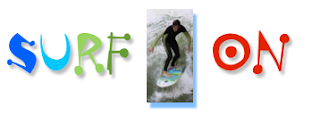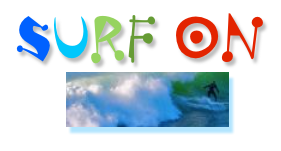
This blog posts on Mondays. Second Mondays of the month I devote to my writing workshop students and anyone else interested in creative writing. Welcome!
> For the archive of workshop posts click here.
For updates to this list, see the page “Recommended Reading on the Craft of Creative Writing”
To learn how to write fiction and creative nonfiction you need teachers, however, they need not be local, Zoomed in, nor even living, because, happily for us all, so many have written books on the craft of writing. Here is my list of favorites. May one or some or even all of these prove as helpful to you as they have been for me.
Boorstin, Jon, Making Movies Work: Thinking Like a Filmmaker
Also helpful for thinking about how and why a reader enjoys a novel or memoir.
Butler, Robert Olen, From Where You Dream: The Process of Writing Fiction
Brilliant.
Chiraella, Tom, Writing Dialogue: How to Create Memorable Voices and Fictional Conversations that Crackle with Wit, Tension and Nuance
Expert and thorough.
Field, Syd, Screenplay: The Foundations of Screenwriting
Excellent for plot.
Fussell, Paul, Poetic Meter & Poetic Form
More than a little bit crunchy and most of it won’t interest the average prose writer, but the chapter on scansion is worth the price of the book, and, for any prose writer aiming to achive vividness in their writing, worth rereading multiple times.
Gardner, John, The Art of Fiction: Notes on Craft for Young Writers
Forget the subtitle, “for young writers,” this is a book for writers of any age, and not necessarily beginners. I read the chapter “On Common Errors” so many times my copy fell apart and I had to buy another. Also highly recommended for writers of creative nonfiction.
Gerard, Philip, Creative Nonfiction: Researching and Crafting Stories of Real Life
Writing a memoir or a longer, more thoughtful piece of journalism? Use this book as your project’s road map.
Glover, Douglas, Notes Home from a Prodigal Son
This includes the essay “The Novel as Poem.” All the essays are excellent but the book is worth the purchase for this one alone. Also recommended: The Erotics of Restraint: Essays on Literary Form
Goodman, Richard, The Soul of Creative Writing
Highly recommended. Especially strong on language.
Hills, Rust, Writing in General and the Short Story in Particular
The best book I’ve found on writing short stories.
Jackson, Bruce, The Story Is True: The Art and Meaning of Telling Stories
McKee, Robert, Story: Substance, Structure, Style, and the Principles of Screenwriting
A profound and essential book about narrative structure, also useful for writers in other genres, including the short story, novel, creative nonfiction, and more.
Oliver, Mary, A Poetry Handbook
This one is short and sweet. Finally, an articulate answer to the question, Why is a rock not a stone? An excellent resource for poets, as well as prose writers, who should never – ever – underestimate the importance of the poetry in their prose.
Piercy, Marge, and Ira Wood, So You Want to Write: How to Master the Craft of Writing Fiction and the Personal Narrative
The chapter on dialogue is the best I’ve read yet. My workshop students praise this one highly.
Prose, Francine, Reading Like a Writer: A Guide for People Who Love Books and for Those Who Want to Write Them
Divine.
Ricco, Gabriele Lusser, Writing the Natural Way: Using Right-Brain Techniques to Release Your Expressive Powers
The first and biggest barrier to writing quality literature is your Left Brain, or your “Sign Mind.” This book shows you how to quiet the Sign Mind and let your Design Mind emerge to play.
> See my talk On Seeing as an Artist or, Five Techniques for a Journey to Einfühlung
Scarry, Elaine, Dreaming by the Book
Essential for understanding how and why specific sensory detail “works” to create a vivid picture in the reader’s mind.
Sims, Norman, and Mark Kramer, editors, Literary Journalism: A New Collection of the Best American Nonfiction
A bit dated now, but nevertheless an outstanding selection. The introduction on the art of literary journalism (the more fashionable term these days is “creative nonfiction”) is vital.
Smiley, Jane, Thirteen Ways of Looking at the Novel
Includes her reviews of 100 novels. A treasure of a book by one of our greatest contemporary novelists.
Pamela Jaye Smith, Inner Drives: How to Write and Create Characters Using the Eight Classic Centers of Motivation
Esoterically fabulous and supremely practical.
Snyder, Blake, Save the Cat!
A snazzy book that reads like, well, your buddy explaining the ropes. It’s for screenplay writers but the basics on story structure are useful for short story writers and novels as well.
Tufte, Virginia, Artful Sentences: Syntax as Style
Wood, James, How Fiction Works
Glorious, delectable, and practical.
Zinsser, William K., On Writing Well: The Classic Guide to Writing Nonfiction
Do you have a book on craft that you don’t see here but that you would recommend? Please let me know.
> For the archive of workshop posts click here.

Thirty Deadly-Effective Ways to Free Up Bits, Drips
& Gimungously Vast Swaths of Time for Writing:
A Menu of Possibilities to Consider
Blood Over Salt in Borderlands Texas:
Q & A with Paul Cool About Salt Warriors
Consider the Typewriter (Am I Kidding? No, I Am Not Kidding)
*
My new book is Meteor





